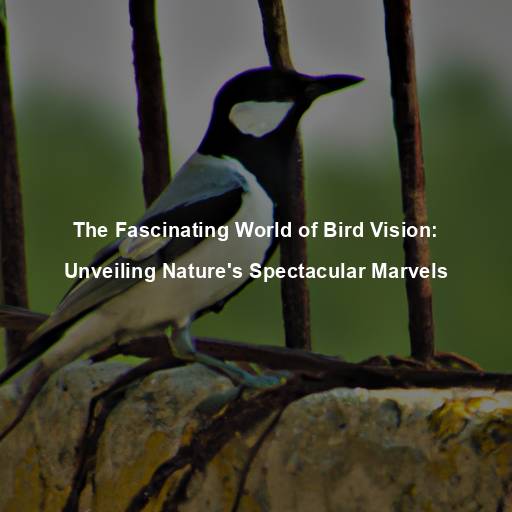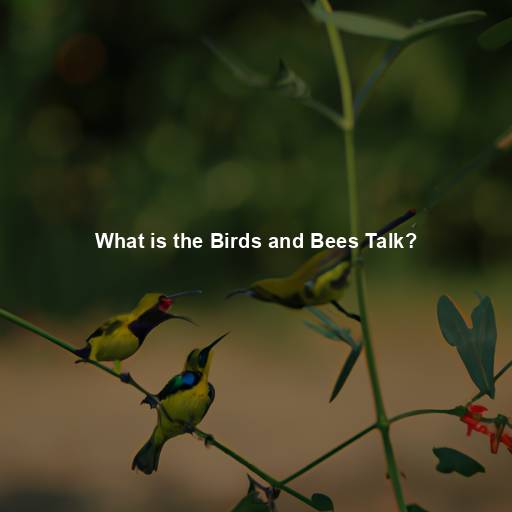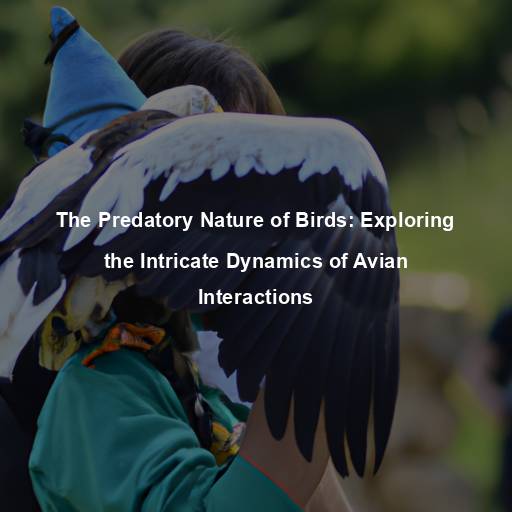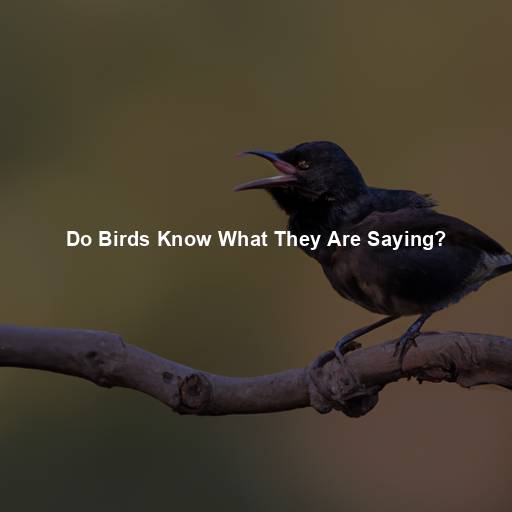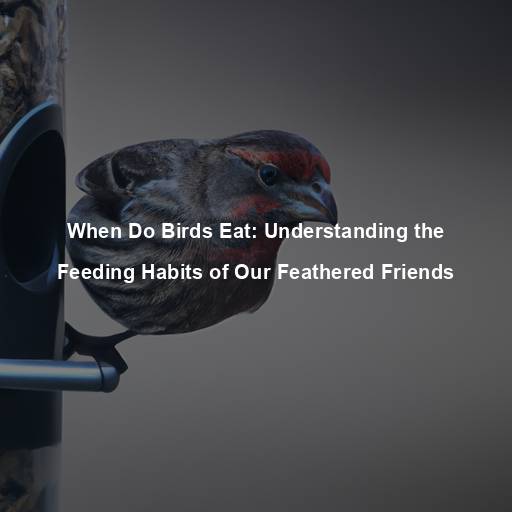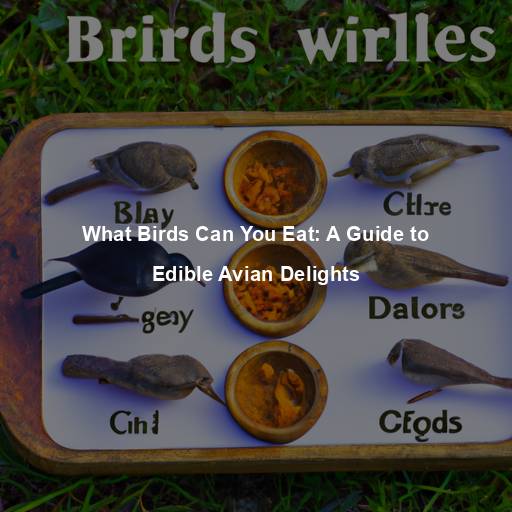The Fascinating World of Bird Vision: Unveiling Nature’s Spectacular Marvels
Last Updated on July 19, 2023 by Evan
Contents [hide]
- 1 Unveiling the Wonders of Bird Vision
- 1.1 The Miraculous Anatomy of Bird Eyes
- 1.2 Unraveling the Mysteries of Avian Visual Acuity
- 1.3 The Art of Navigating the Skies: Avian Navigation Techniques
- 1.4 The Beauty of Bird Vision: A World of Colors and Patterns
- 1.5 The Future of Bird Vision Research
- 1.6 Unveiling the Marvels of Avian Vision: A Journey of Wonder and Discovery
- 1.7 The Power of Pupil Constriction
- 1.8 The Spectacular World of Ultraviolet Vision
- 1.9 Beyond Color Perception: Polarized Light Vision
- 1.10 Solving the Riddle of Bird Eye Movements
- 1.11 The Integration of Visual and Magnetic Senses
- 2 Exploring the Mysterious World of Avian Vision: Research and Discoveries
- 3 Inspiring Wonder and Appreciation for Bird Vision
- 4 FAQs: What are Birds Vision?
Unveiling the Wonders of Bird Vision
Throughout history, we have found ourselves spellbound by the allure of birds – their beautiful songs and graceful flights effortlessly captivating our senses. But what about their visual prowess? In this captivating piece, we take you on an exhilarating expedition to discover the hidden intricacies of bird vision. Brace yourself for an awe-inspiring ride as we unravel the enigmatic adaptations and unearth the mystifying secrets behind their extraordinary visual acuity.
The Miraculous Anatomy of Bird Eyes
Birds possess eyes that are marvels of evolutionary engineering. These organs are specifically designed to meet the diverse visual demands of different species. While variations exist, the fundamental anatomy of bird eyes remains remarkably consistent.
The Avian Eye Structure
The avian eye boasts a structure that allows birds to perceive the world with astonishing clarity. Similar to humans, birds have corneas, irises, and lenses. However, their eyes exhibit distinct features that set them apart from mammalian vision.
Tetrachromatic Vision
Birds, with their remarkable tetrachromatic vision, possess an extra cone cell in their retinas that surpasses our humble trichromatic ability. This intriguing biological advantage expands their perception of color, granting them the power to envision a dazzling spectrum invisible to us mere humans. Picture a kaleidoscope of vibrant hues that enliven their world, where the mesmerizing beauty of flowers and feathers reaches new heights, captivating their senses with shades unknown to us.
Extraordinary Field of View
Birds, with their incredible eyesight, possess a vision that far exceeds our own. While our field of view is limited to around 180 degrees, these remarkable creatures can perceive an astonishing 300 degrees or even more. This panoramic vision grants them the ability to effortlessly survey their surroundings, spotting potential threats and potential meals with ease.
Unraveling the Mysteries of Avian Visual Acuity
The incredible gift of the feathered creatures lies within their uncanny talent for honing in on even the tiniest of particulars, effortlessly discerning minuscule objects with their sharp gaze that stretches across vast expanses. It is a wondrous testament to the intricacy and perfection of Mother Nature’s craftsmanship, as feathered beings effortlessly navigate their surroundings, never missing a beat.
Superb Visual Acuity in Raptors
The awe-inspiring raptors, such as eagles and falcons, have a reputation for their unparalleled ability to perceive the world around them. Observing their surroundings from great heights, these majestic birds possess an astonishing visual acuity that leaves us in awe. Through a remarkable concentration of cone cells in their eyes, they possess the gift of perceiving even the tiniest of details with unimaginable clarity. The precision with which they spot a small rodent in rapid motion on the ground from thousands of feet above is nothing short of miraculous.
Binocular Vision for Depth Perception
The captivating wonder of binocular vision lies within the innate ability of various avian species to effortlessly perceive depth and distance. A virtual masterpiece of visual adaptation, this awe-inspiring trait is attained through the seamless synergy of overlapping visual fields from each eye. Through this intricate mechanism, birds navigate their surroundings, effortlessly calculating distances, and seizing their prey with a seemingly supernatural precision that leaves us in perpetual amazement.
Infrared Vision: The Astonishing World of Pit Vipers
In the vast world of birds, there exists a captivating phenomenon that leaves us in awe – the power of infrared vision. It is a skill that some feathered creatures, like pit vipers, have mastered over time. These remarkable beings have developed unique sensory pits on their beaks, acting as their very own thermal detectors. With this extraordinary ability, they can effortlessly track the heat signatures of their prey, even in the depths of night’s mysterious darkness.
Birds are nature’s celestial navigators, effortlessly traversing vast distances during their seasonal migrations. Their incredible ability to navigate relies on a combination of celestial cues, magnetic fields, and visual landmarks.
The avian world holds a captivating secret, as birds navigate their way through the vastness of the skies. With unwavering determination, these feathered creatures embrace the enigmatic complexities of celestial cues, drawing inspiration from the sun’s radiant glow and the celestial dance of stars. With an awe-inspiring internal compass, they defy the whims of weather, embarking on epic odysseys that stretch across seemingly infinite distances. Their unyielding spirit, guided by an instinctual compass, is a testament to the boundless wonders of nature.
Birds possess an innate ability to detect Earth’s magnetic field, providing them with an additional navigational tool. This internal magnetic compass, still not fully understood by scientists, allows birds to navigate with precision, even in the absence of visible landmarks.
Visual Landmarks: Mapping the World from Above
In addition to celestial and magnetic cues, birds also rely on visual landmarks to navigate their aerial highways. They memorize key topographical features, such as coastlines, rivers, and mountains, creating mental maps that guide them through their migratory routes.
The Beauty of Bird Vision: A World of Colors and Patterns
The visual world of birds is an awe-inspiring tapestry of vibrant colors and intricate patterns. These visual displays serve a multitude of purposes, from attracting mates to camouflaging from predators.
Courtship Displays: A Kaleidoscope of Colors
In the enchanting world of courtship, winged suitors unveil their kaleidoscopic plumage, captivating the hearts of elusive paramours. From the opulent peacock, endowed with its resplendent feathers casting ethereal hues, to the sprightly manakin, choreographing an enigmatic dance, these avian performances celebrate the profound significance of awe-inspiring beauty in the intricate realm of avian love affairs.
Camouflage: The Art of Blending In
In the realm of avian adaptations, the delicate dance between vibrant hues and unseen invisibility sparks a mesmerizing intrigue. Witness how certain winged creatures, wise as the moonlit night, cloak themselves in cryptic plumage, allowing them to slip through the world with a stealthy majesty. From the forest dwellers adorned with intricate patterns to the mysterious owl, adorned in nature’s camouflage, this artful mastery shields them from the ever-watchful eyes of lurking predators, leaving us in awe of their captivating survival strategies.
The Future of Bird Vision Research
Bird vision, an endlessly fascinating subject, never ceases to perplex researchers and ignite curiosity. With each new study, the intricate complexities of avian visual systems unveil themselves, revealing insights that challenge our very understanding of the evolution of vision. As the boundaries of knowledge expand, scientists are captivated by the enigmatic nature of these feathered creatures’ visual capabilities, keeping us all eagerly anticipating the next revelation in this mesmerizing field.
Advancements in Technology
Incredible breakthroughs in technology have completely transformed the world of bird vision research. With cutting-edge tools like high-resolution imaging and genetic analysis, scientists are delving into the intricate world of avian eyes like never before. It’s a realm filled with perplexing mysteries and hidden wonders, where microscopic structures hold the keys to understanding the extraordinary visual prowess of these feathered creatures. Brace yourself for a burst of mind-boggling discoveries as we unravel the enigmatic secrets behind their breathtaking visual capabilities.
Insights into Human Vision
Exploring the captivating realm of bird vision not only fuels our comprehension of our feathered friends’ miraculous biology but also unravels the enigmatic tapestry of our own human vision. As researchers delve into the comparative depths of avian and human visual systems, a grand symphony of knowledge unfolds, revealing the symmetrical threads of evolution that weave through diverse species. Through these captivating insights, scientists embark on a voyage of perplexity, piecing together the intricate puzzles of vision across the expansive spectrum of existence.
Unveiling the Marvels of Avian Vision: A Journey of Wonder and Discovery
As our captivating journey through the realm of bird vision nears its end, it is impossible not to be utterly astonished by the extraordinary adaptations and breathtaking visual wonders that these winged beings possess. From the intricacies of their eye structure to their unparalleled ability to perceive the finest details and navigate with uncanny precision, birds serve as a mesmerizing reminder of the boundless beauty and intricate complexity that abound in our natural realm.
Join us on this ever-continuing journey of exploration, where the wonders of bird vision and the secrets of nature’s design await our curious minds. Let the enchanting melodies and mesmerizing flights of these avian marvels inspire us to appreciate the boundless wonders that surround us each day. ## Unraveling the Extraordinary Adaptations of Avian Eyes
The Power of Pupil Constriction
It’s fascinating how birds have this incredible talent to control the size of their pupils. You see, these little creatures can adapt their eyes to different environments, from sunny meadows to shady woods. By swiftly narrowing or widening their pupils, birds can make the most out of their vision and keep everything crystal clear, no matter how the lighting changes. It’s like they have their very own built-in light dimmer!
The Spectacular World of Ultraviolet Vision
While humans are limited to perceiving a small portion of the electromagnetic spectrum, birds have unlocked the secrets of ultraviolet (UV) vision. Many avian species possess specialized cone cells that can detect UV light, revealing a hidden world of patterns and markings invisible to human eyes. This unique adaptation has significant implications in various aspects of bird behavior, including foraging, mate selection, and predator avoidance.
Beyond Color Perception: Polarized Light Vision
Birds have also evolved the ability to perceive polarized light, which is light that vibrates in a specific direction. This adaptation allows them to detect subtle changes in the polarization of light, enhancing their ability to navigate, locate prey, and communicate. By harnessing the power of polarized light, birds can glean valuable information about their environment that is invisible to other animals.
Solving the Riddle of Bird Eye Movements
It’s truly mesmerizing to witness the sheer finesse in a bird’s eye acrobatics. These captivating eye movements, called saccades, unlock a world of possibilities for our feathered friends. From diligently surveying their surroundings to effortlessly following the dance of a darting prey, saccades are the secret behind their visual prowess. The seamless coordination between their visual system and motor control showcases the marvel of nature’s engineering, leaving us in wonder and admiration.
The Integration of Visual and Magnetic Senses
Birds possess a unique ability to integrate information from their visual and magnetic senses, creating a multifaceted perception of their surroundings. By combining visual cues with the Earth’s magnetic field, birds can navigate accurately and orient themselves during their epic migrations. This extraordinary sensory integration highlights the complexity and sophistication of avian perception.
Exploring the Mysterious World of Avian Vision: Research and Discoveries
Unveiling the Genetic Basis of Avian Vision
Deep within the realm of modern scientific exploration, a captivating revelation has emerged, shedding light on the intricate secrets of avian vision. Through the marvels of genetic inquiry, astute researchers have skillfully unraveled the delicate framework that governs this extraordinary phenomenon. Hidden within the wondrous tapestry of avian existence, a select group of genes has been designated with a profound purpose – to shape and mold the wondrous eyes that adorn these remarkable creatures. By traversing the labyrinthine corridors of avian DNA, scientists embark on a journey to unlock the enigmatic secrets that underlie the evolution and kaleidoscopic diversity of visual systems across the aviary domain.
Studying Avian Vision to Improve Conservation Efforts
The world of avian visual perception holds intriguing mysteries that could revolutionize our conservation strategies. Scientists delving into the depths of understanding how various bird species perceive their surroundings could offer valuable insights for minimizing human interference and safeguarding their habitats. By unraveling the enigmatic realm of avian vision, we may uncover secrets that hold the key to the preservation of these magnificent creatures and the delicate balance of our natural ecosystems.
The Influence of Climate Change on Avian Vision
The ever-present issue of climate change casts a shadow of doubt over the well-being of our feathered friends. From altering their sacred dwellings to distorting their very perception of reality, the impact knows no bounds. As the temperature soars and rain dances to a different tune, the once abundant food sources become elusive, mating rituals turn topsy-turvy, and their age-old journeys are thrown into disarray. In unraveling the mysteries of avian vision amidst this bewildering panorama, scientists delve into the depths of resilience and adaptability, hoping to discover the secrets that will safeguard our avian companions in their uncertain future.
Advancements in Bird Vision Research: A Glimpse into the Future
In the vast realm of bird vision research, where scientific progress seems to soar on wings of innovation and collaboration, exciting breakthroughs are unfolding. Pioneering minds are tapping into a kaleidoscope of cutting-edge techniques, from state-of-the-art imaging technologies to mind-boggling computational modeling, in their quest to unravel the mysteries of avian ocular wonders. The tantalizing potential that lies within these advancements promises to illuminate our understanding of the captivating realm of avian vision, revealing marvels that will surely leave us astounded.
Inspiring Wonder and Appreciation for Bird Vision
As we conclude our exploration of bird vision, we are left with a profound appreciation for the wonders of the natural world. The remarkable adaptations and visual capabilities of birds remind us of the limitless diversity and complexity found in nature. Let us cherish the vibrant colors, intricate patterns, and astonishing visual acuity that birds bring to our lives.
As our understanding of the intricacies of bird eyesight deepens, it becomes all the more perplexing and awe-inspiring. And yet, amidst this enigma, we must not lose sight of the urgent need to safeguard the havens where these extraordinary creatures thrive. By nurturing and preserving the fragile ecosystems that serve as the lifeblood of these avian marvels, we not only secure their existence but also guarantee the wonder and fascination for the generations to come.
Have you ever stopped to truly marvel at the beauty of nature? The ethereal melodies of birdsong or the majestic flight of a raptor can transport us to a world of awe and wonder. These enchanting creatures possess a visual perception that is nothing short of extraordinary, reminding us to embrace the splendor of our surroundings and marvel at the diverse marvels that unfold each day. So, let us pause and allow their remarkable vision to ignite a newfound appreciation for the extraordinary world we inhabit.
FAQs: What are Birds Vision?
What is the vision like for birds?
Birds have remarkable vision that differs in various aspects from the human visual system. Their ability to see ultraviolet light gives them a broader color spectrum perception. Additionally, birds have a higher visual acuity and can see finer details, allowing them to spot prey or detect predators from a distance. Some bird species also possess a wider field of view due to their eyes’ placement on the sides of their heads, enabling them to monitor their surroundings more effectively.
How does bird vision compare to human vision?
When it comes to seeing the world through fresh eyes, birds truly take the cake. Unlike us mere humans, they possess an extraordinary superpower – the ability to perceive ultraviolet light. This mind-boggling skill expands their color palette into a whole new realm, painting the world in hues we can only dream of. But that’s not all; their hawk-like eyes boast an uncanny visual acuity, capturing even the tiniest of details and producing images that are crisper than a freshly baked croissant. And let’s not forget their lightning-fast focus, effortlessly keeping pace with objects hurtling through the air. It’s a visual feast that leaves us perplexed and in awe.
Can all birds see ultraviolet light?
Have you ever wondered about the mysterious world of avian vision? Well, get ready to be astounded! While not all birds have the remarkable ability to see ultraviolet light, a significant number of them possess this extraordinary talent. It’s like having superpowers, but for our feathered friends! And here’s the kicker – the capacity to see ultraviolet varies among different bird species, depending on their unique needs and behaviors. For example, birds that rely on spotting food sources with ultraviolet patterns, like those fancy nectar-feeding birds or insectivorous species, tend to have this mind-blowing ability. Just imagine, they can effortlessly identify ripe fruits, locate nectar-producing plants, or even spot hidden UV patterns on their potential prey. It’s like they have their own secret language that the rest of us can only dream of understanding.
Why do birds have a wider field of view?
Birds possess a wider field of view because their eyes are positioned on the sides of their heads, allowing for a greater peripheral vision. This arrangement offers them a substantial advantage in monitoring their surroundings for both predators and prey. With a wider field of view, birds can detect potential threats approaching from any direction or spot potential food sources in their peripheral vision while focusing on other activities.
Do birds have better night vision than humans?
Generally, birds do not have better night vision than humans. Most birds have limited night vision compared to mammals like owls, which are adapted to low-light conditions. However, some bird species, such as owls, do possess exceptional night vision due to adaptations like larger eyes, a greater number of rod cells, and enhanced light-gathering capabilities. These adaptations allow them to effectively hunt in dim light or darkness, giving the impression of superior night vision compared to humans.
How do birds avoid obstacles during flight?
Birds have exceptional visual processing capabilities that enable them to avoid obstacles during flight. They possess highly developed depth perception and motion detection, which helps them accurately assess and navigate their environment while in flight. Additionally, birds have well-developed optic flow perception, allowing them to perceive and respond to changes in their surroundings quickly. These visual abilities, combined with their agility and maneuverability while flying, aid birds in avoiding obstacles and navigating through complex environments.

